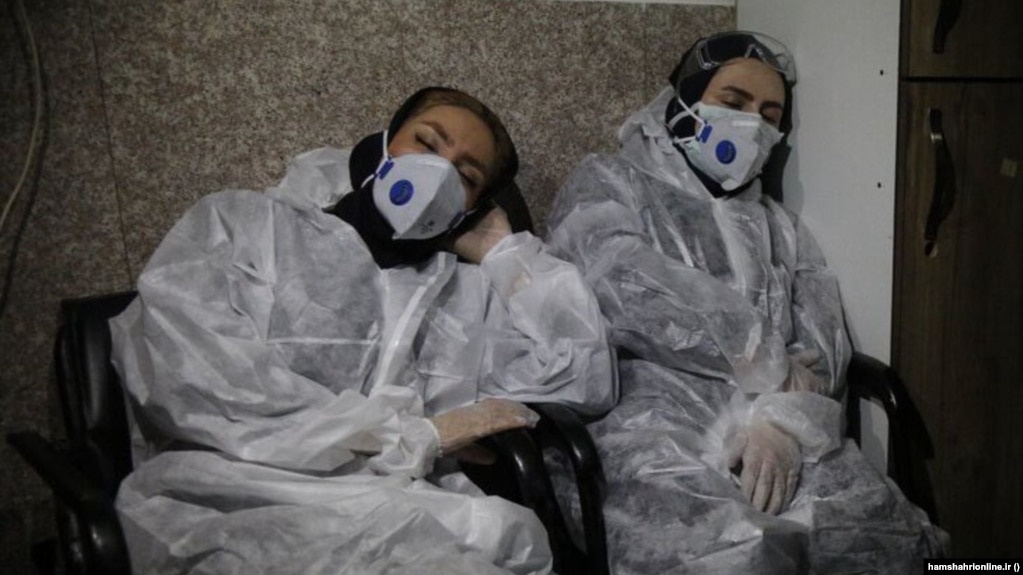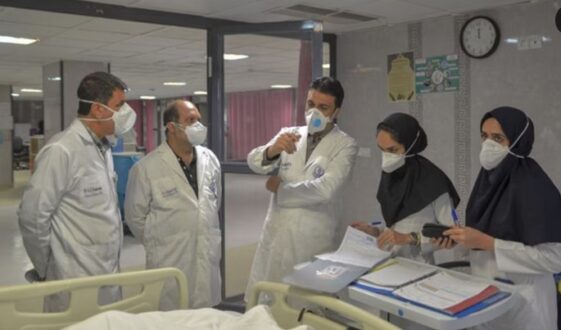rferl.org – The alarming number of young Iranian doctors taking their own lives has put the future of the country’s health-care system in doubt.
Overworked, underpaid, and “humiliated” by their seniors, many resident doctors — medical school graduates in training — are harboring suicidal thoughts or considering moving abroad.
“Suicide among residents today is more of a crisis,” Nima Shahriarpur, an emergency medicine doctor, told the Iranian news website Khabar Online.
And he may have a point: 16 resident doctors committed suicide in the Iranian year ending on March 19. A year earlier, 13 young physicians took their own lives.
The most recent incident happened last week, when Parastu Bakhshi was found dead by her colleagues at her hospital residence. The 34-year-old resident doctor was reportedly under increasing pressure at work.

Difficult Years
The residency period starts after medical school and lasts between three and five years. For some it starts tough. For others it is even more difficult.
Resident doctors, most of whom are in their 30s, are expected to work 30-hour shifts and are paid between 80 million and 110 million rials ($125 to $172) per month. The payments are often delayed.
The doctors are not allowed to practice medicine outside of the hospital during their residency and often have to work a second job in a different field to make ends meet.
A resident doctor who spoke to RFE/RL’s Radio Farda on condition of anonymity said young physicians are subjected to poor working conditions, such as putting up with their supervisors’ “humiliating behavior” and “bad language,” while also being forced to work extra shifts.

According to Vahdat Shariat, the head of the Iranian Psychiatric Association, 30 percent of resident doctors in Iran consider committing suicide.
In September, Shariat and Hamid Yaqubi, the head of the Iranian Scientific Society for Suicide Prevention, urged the health minister to take action.
In a letter, they cited a study that found that 25 percent of resident doctors in Tehran suffered from severe depression.
They also suggested several measures to address the problem, including reducing excessive shifts, providing insurance for resident doctors, reviewing their salaries, and offering mental health support.
In recent years, resident doctors have sought to raise awareness of their plight on social media by posting images of their colleagues who committed suicide. While this has grabbed the media’s attention, there has been no official response.
Not Easy To Quit
It was even very difficult to quit, until recently.
To be allowed into a residency program, medical school graduates needed two people to guarantee they would not leave the country or quit the program in any way — including death by natural causes. Otherwise, the guarantors would have to pay damages.
That rule was deemed illegal and struck down in 2021, but residents say they are still asked to provide guarantees. A pharmacy resident, for instance, was asked to provide a guarantee worth 9.9 billion rials (over $15,500) just to travel abroad for holidays last month.
The financial guarantees make it difficult for doctors, particularly residents, to leave the country. But reports in Iranian media suggest doctors are leaving in droves.
The economic daily Donya-e Eqtesad reported last year that 5,000 doctors had emigrated from Iran in the Iranian year ending in March 2022, around 2,000 more than in 2020.
Citing a survey published in January 2023 by the state-funded Iranian Migration Observatory (IMO), local media say 50 percent of doctors surveyed sought to leave Iran. One-third of those said they were willing to take less-specialized jobs abroad unrelated to medicine.
The most popular destinations for Iranian doctors and nurses are Western nations, particularly the United States, and Persian Gulf countries.
A December 2022 IMO report showed that as of 2018, some 29,000 Iranians worked in the U.S. health-care system, including 8,000 physicians and surgeons. The overall number of Iranian health-care workers in the United States increased to 36,000 by 2021.
A survey published in Iran’s state-run IRNA news agency last year found that many doctors start planning to leave the country in their 20s while in medical school.
“Interns see the residents’ situation up close and know why they are unhappy,” the report said. Among other reasons cited for their desire to leave were Iran’s poor economic conditions and a poor work-life balance.
Nevertheless, little has been done to help resident doctors.
In a letter to Iranian President Ebrahim Raisi in January, Psychiatric Association chief Shariat warned that if officials continue to ignore the plight of young physicians, the country will have to contend with the “collapse of the health-care system.”
 Shabtabnews In this dark night, I have lost my way – Arise from a corner, oh you the star of guidance.
Shabtabnews In this dark night, I have lost my way – Arise from a corner, oh you the star of guidance.



